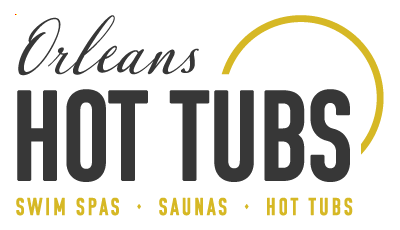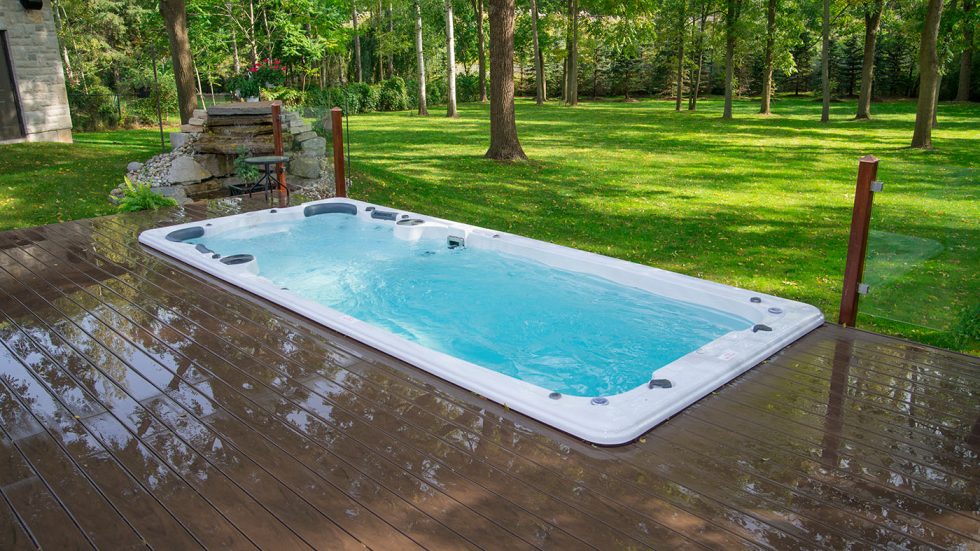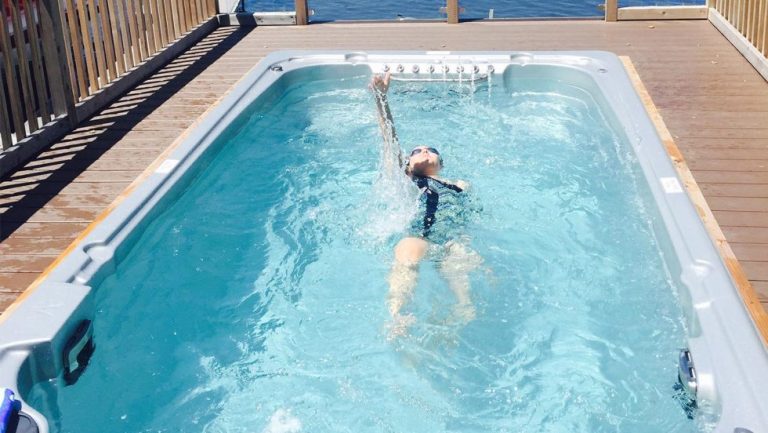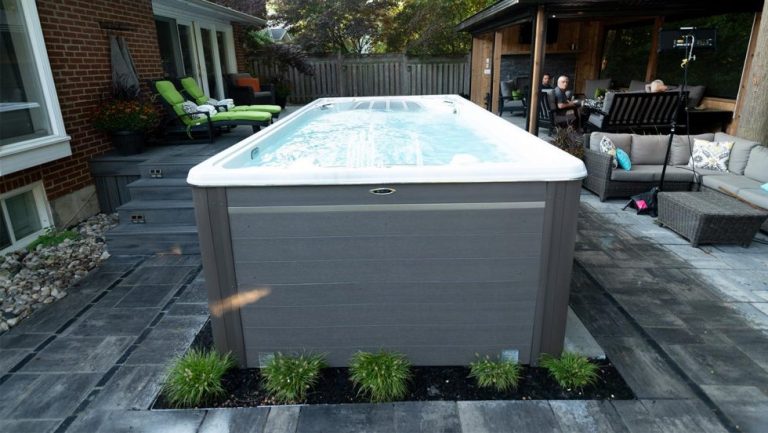Although most modern swim spas are quite energy efficient, an improperly set-up swim spa can still end up costing quite a bit to run. With that in mind, here are 6 tips to make sure your swim spa is running as efficiently as possible.
- PROGRAM YOUR FILTRATION
One of the easiest ways to lower your swim spa’s energy costs is to program its filtration cycles.
All swim spas need to filter their water to remove contaminants and keep the water clear and safe to swim in. To do this, swim spas turn on one of their pumps to cycle the water through the filter for several hours at a time. This process is responsible for a significant part of the monthly hydro cost of a swim spa.
Fortunately, most swim spas allow for some degree of control over their filtration. At its most basic, this can mean being able to set the start time of your filtration cycles so that you can avoid peak hydro rates. More advanced systems allow you to set multiple start and end points throughout the day, program different cycles on different days (to take advantage of differing rates between week days and weekends) and even switch between different preset programs based on how often you’ll be using the swim spa in the coming days. For exact instructions on how to program your swim spa’s filtration cycle, consult your swim spa owner’s manual.
- FIX LEAKS
Most swim spas are insulated with spray foam. Although spray foam does provide good insulation, it is also very good at absorbing and trapping water.
Spray foam insulation works by trapping heat in the air bubbles that make up the insulation. While air is a great insulator, water is not. If the foam gets wet and those air bubbles fill with water, the insulation loses most of its effectiveness.
If you notice a leak in your swim spa be sure to have it fixed as soon as possible. Even minor leaks can, over time, cause your swim spa to lose a ton of insulating value by slowly saturating its insulation.
- REPLACE YOUR WORN OUT SWIM SPA COVER
A worn out swim spa cover is one of the largest potential sources of heat loss for swim spas. Much like swim spas themselves, swim spa covers utilize foam to provide insulation. This foam is covered in a plastic vapour barrier to prevent it from becoming waterlogged by the steam coming from the swim spa water. Over time, however, the cover can begin to take on water as this vapour barrier slowly breaks down or is punctured. Once the foam in the cover becomes saturated; the cover will lose most of its insulating ability.
You will know your cover has started to take on water when it begins to feel heavier than normal. This added weight is water that is trapped in the foam. You should consider buying a new cover as soon as you notice a significant change in the weight of your swim spa cover.
When purchasing a new swim spa cover, make sure to look over all of your options. It’s no secret that standard swim spa covers are not the best. They’re hard to handle, are prone to damage that reduces their lifespan, and don’t provide the best insulating value.
Fortunately, there are alternatives. The best one that we’ve come across is the Rollaway Cover from Hydropool. Not only are Rollaway Covers easier to handle and longer lasting, they also come in one piece to for a complete seal around the swim spa. This greatly increases the energy efficiency of the cover. For more information on Rollaway swim spa covers, contact us.
- ADD SOME EXTRA INSULATION
The best insulation system for swim spas is one that provides two layers of insulation; one around the shell of the swim spa; the other around its outer cabinet and floor.
If your swim spa is not insulated around the cabinet or floor, we recommend adding in some additional insulation in the colder months to greatly improve the energy efficiency of your swim spa. Adding insulation around the cabinet and floor of your swim spa allows you both to trap the waste heat created by the pumps and heater and help protect the pumps and heater in case of a power outage during the winter.
While this added insulation does improve the energy efficiency of your swim spa, you don’t want to completely stuff the swim spa with insulation. Keep in mind that the pumps need air to cool themselves. If they don’t get enough fresh air they can overheat and potentially break. For this reason you will want to remove any added insulation in the summer.
- MAINTAIN YOUR FILTERS
Maintaining a regular filter cleaning schedule will not only give you better, clearer water to swim in, it can also help you save money!
Water cannot pass through a dirty filter as easily as it can through a clean filter. This causes the pumps to work harder in order to properly filter the water. For that reason, constantly pulling water through a dirty filter will increase the power consumption of the pump while also reducing its lifespan.
To keep your filters clean, rinse them under running water to clean off large dirt and debris ever 1-2 weeks. To clean off oils and lotions that build up over time, you’ll also want to soak your filter in a chemical solution every 3-4 months.
Cleaning filters only goes so far however. Over time, the filter media will begin to loosen and the filters will begin to lose effectiveness. To keep your filters running at peak efficiency, replace them every 12-16 months.
- LOWER YOUR WATER TEMPERATURE
One of the easiest, and best, ways to spend less to run your swim spa is simply to lower the temperature of the water. In fact, depending on the outside temperature, lowering the temperature of your swim spa water by only 1 degree can lower your energy bill by as much as 10-15%!
This does not mean that you should be constantly changing your swim spa’s water temperature though. Often times, the cost of heating the water back up to temperature can be more than what you saved by lowering the temperature in the first place. Instead, try setting your swim spa 1-2 degrees cooler than you normally would. If you don’t notice a big difference, keep the temperature lower and enjoy the savings!
WRAPPING UP
Swim spas are generally very energy efficient, especially when compared to more traditional above ground and inground pools. By following these 6 tips, you’ll ensure that your swim spa is running as efficiently as it can; with the savings really becoming apparent during the colder months of the year. If you have any further questions about swim spas, or swim spa ownership, contact one of our swim spa professionals!




